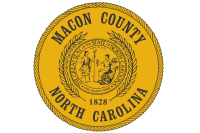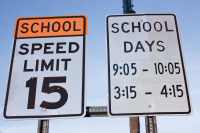Can mountain bikes find a home in the Smokies?
Mountain bikers face a long, steep climb in their fight to see more trails opened to tires in the Great Smoky Mountains National Park.
One of the major hurdles facing the sport is stereotypes, said Kent Cranford, a mountain biker and owner of Motion Makers bike shop in Sylva.
“People have images from TV that somebody is going to come jumping over their head or screaming by with tattoos and piercings all over,” Cranford said. “This is not a Mountain Dew commercial. Most people are effectively hiking on wheels. They want to get out in the backcountry and see the wilderness, too.”
Mountain biking would allow people to see more of the park, a lot of which is out of bounds due to distance.
“As big as that park is, penetrating in 20 miles is not something you can do without staying overnight,” said Timm Muth, a mountain biker who lives near Sylva. “But on a bike 10 miles in and 10 miles back out is very doable in a day, and it would make the park more accessible to a lot of people.”
Pam Forshee, a mountain biker in Franklin, said she rarely visits the Smokies now.
Related Items
“There is nothing for me other than hiking. If I could go over there and hike and bike and camp for the weekend it would be heaven,” said Forshee, who runs Smoky Mountain Bicycles in Franklin with her husband, Dave.
“I don’t understand why the national parks have not allowed bicycles in the park all these years. We have as much right to be on the trails as anyone else.”
Cranford is a member of the International Mountain Biking Association, which has been lobbying for bike access in national parks for years. Cranford thinks they are steadily chipping away at the barriers shutting out bikes.
“It is wrong thinking to think a trail can just be this, or just that. It is all of our land,” Cranford said.
But many of the hikers and nature lovers who currently enjoy the trails of the Smokies don’t want to see mountain bikes join the mix. Reasons include wear and tear on the trails, the risk of collisions and what many consider a more intrusive form of recreation.
Greg Kidd, senior program manager with the National Parks Conservation Association Asheville office, agreed that nearby national forests provide ample opportunity for mountain bikers and a host of other recreational uses including like hunting and kayaking. But parks aren’t the place for such a smorgasbord.
“The fact is that national parks are a place apart. They are designed for a different kind of experience,” Kidd said. Besides, “The park doesn’t even have the resources to maintain the trails as currently used.”
Horses and bikes
Mountain bikers pushing for access in the Smokies often point to horses on the trails and ask: why them and not us? Horseback riders are allowed on approximately half of the park’s 800 miles of trails, with the greatest percentage being on the North Carolina side of the park.
“I think it is unfair they grandfather horses into the park and won’t allow bikes as well,” Muth said. ”Certainly any trails that are already open to horses should be open to mountain bikes. Mountain bikes have much lower impact on the trail surface than a horse.”
The mechanics of a horse hoof versus a bike tire are quite different. The horse rotates its hoof as it makes contact with the ground, gouging up the trail bed in the process. The loose soil is then more vulnerable to erosion. Mountain bikes, on the other hand, compact the soil and harden the trail’s surface, helping it stay put.
“Horses kick up the terrain a lot more than bikes do,” Forshee summed up.
But Kidd disagrees with the bikers’ line of thinking.
“Certainly there is no question that horses have an impact on the trail. But if we increase the types of uses — like bicycling — that would certainly just exacerbate the problem,” Kidd said.
Not to mention the sheer number of mountain bikers compared to horse owners, Kidd said.
“Arguably with the growing popularity of mountain biking, the amount of potential mountain bike use on those trails would dwarf the amount of horse use,” Kidd said.
But the flip side is mountain bikers would help take care of the trails they ride, Cranford said.
“That is the upside. If they let mountain bikes in, they work on trails,” Cranford said. “Ask the forest service how they feel about mountain bikers and they’ll tell you they love them because they come in like crazy to work on trails.”
Sharing the trail
Mountain bikers aren’t surprised when they encounter a backlash.
“You often have different user groups who want to be selfish and keep places to themselves,” Muth said.
But Forshee pointed to the arrangement at Tsali — where trails are designated for mountain biking and horseback riding on alternate days — as proof it can work. Even sharing the same trail, it could work, she said.
“It is a matter of using caution and proper etiquette,” Forshee said.
That etiquette calls for bikers to yield to horses, and for good reason, Muth said.
“I’ve seen guys go flying by a horse within a couple feet. They say ‘I’m not going to ride into the horse,’ but that’s not the point. You are going to scare the heck out of them,” Muth said. When they get spooked, they could buck their rider.
Instead, mountain bikers should always come to a stop, get off their bikes and offer a greeting.
“The talking helps because the horses recognize you are another person. When you are on a bike they can’t figure out what the heck all that stuff is,” said Muth.
Muth generally says “hello” then asks the horseback riders how to handle getting past. If they have skittish horses, they might ask the bikers to scoot off the trail while they navigate by.
“They are very appreciative of this,” Muth said of his approach. “Different user groups need to take the time to understand what each others needs are out there.”
While most of Muth’s encounters are friendly, there have been exceptions. In an extreme case, he came upon hunters at Tsali who stood across the trail with their guns and wouldn’t let him pass. On another occasion, his wife and son ran into a hunter who was put out by the their presence and fired shots into the air as they rode away.
Safety first
An oft-heard argument by those opposed to mountain biking is the fear of collisions.
“Part of what is fun about mountain biking is moving at a fast clip. If a bicyclist comes screaming around a bend on a trail and an unsuspecting hiker happens to be walking up that trail, that could lead to some very serious issues,” Kidd said.
Muth said there is always that chance, and has actually seen a few near collisions.
“I love to fly fast downhill and you could run into problems if you come around a blind curve and there are three or four people standing on the trail,” Muth said. “Mountain bikes need to be conscious that when they come around a blind corner they should expect there could be somebody standing there.”
By the same token, hikers should assess the vehicles at a trailhead for clues as to who is on the trail that day. If there are three or four cars with bike racks, it should signal to hikers be cautious — or pick a different trail, Muth said.
“If I know it is hunting season and there are three pickup trucks at the trailhead with gun racks, I say ‘you know, maybe I will go somewhere else,’ as much out of consideration for them as safety for myself,” Muth said. “There is plenty of room for everybody. You just have to be conscientious that everybody has a right to be doing different things.”
Not any time soon
While optimistic, bikers acknowledge they may have a long road ahead of them in their fight for access in national parks.
Bob Miller, a park ranger and spokesperson for the Great Smoky Mountains National Park, said the park has no plans in the near future to tackle the mountain bike issue.
That was pretty much the answer mountain bikers were bracing for.
“I don’t think we are going to see much in the way of trails opened up,” Cranford said.
Although a proposed rule change would make it easier for parks to open trails to mountain bikes — namely by removing the requirements for a taxing analysis — Miller said the park would take the issue seriously and opt for a thorough and comprehensive review even if it wasn’t technically required.
The top issues to weigh: would mountain biking degrade the national park experience of others using the trails and would mountain biking harm the ecosystem, Miller said.
Another question is whether the park could afford the additional ranger patrol and rescue operations that would go along with mountain biking in the park, or afford the extra trail maintenance.
Miller said such a study would be done only in the context of a parkwide planning process, not a piecemeal approach of opening a trail here and there. Overlay that with drawn out public comment periods, and you have one massive undertaking.
Miller said the Smokies has broached the subject anecdotally, but never had what you would call a formal request to take on the issue.
“The fact is we are surrounded by some pretty nice mountain bike areas already,” Miller said.
But Muth said the mountain bike trails in the Pisgah and Nantahala national forests don’t offer enough diversity, particularly by way of easier mountain bike trails. There are few options for beginners or even intermediate riders.
Mountain bikers say they aren’t advocating for a wholesale opening of all trails in the park, admitting there are some trails that simply aren’t suitable.
“I don’t think bikes should be on the Appalachian Trail,” Cranford said by example. Others would be too steep, too narrow, too rocky.
“Most of the trails there wouldn’t even be fun to ride,” Cranford said.
Likewise, Kidd isn’t opposed to bikes carte blanche.
“I think if a trail is appropriately designed and designated specifically for mountain biking use, I think there is a potential for mountain bikes to find a place in the park,” Kidd said. “As for bike use in the backcountry, we would likely find that incompatible as a blanket statement. But that’s not to say there is not a single trail in the park where it would not be appropriate.”









